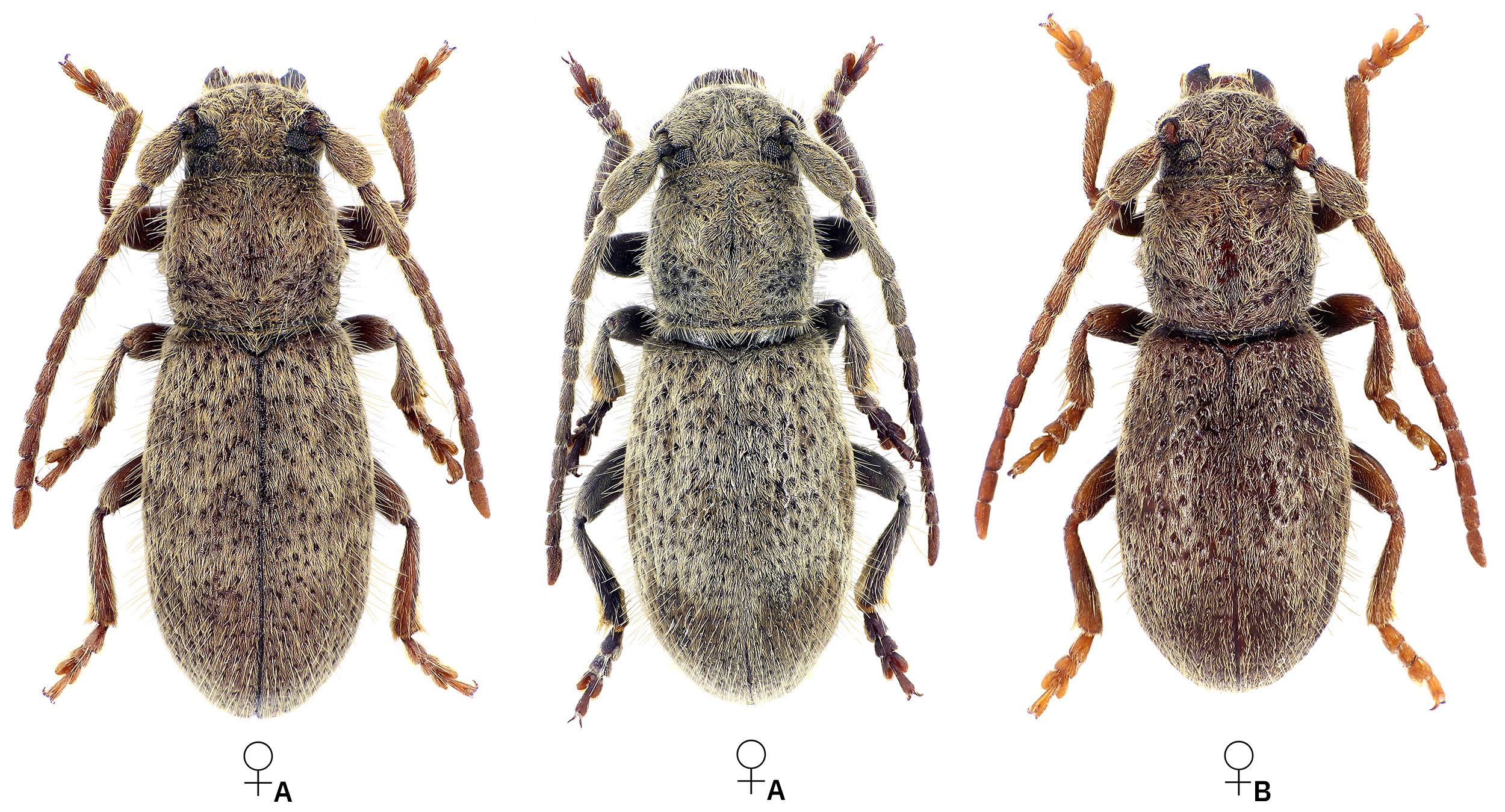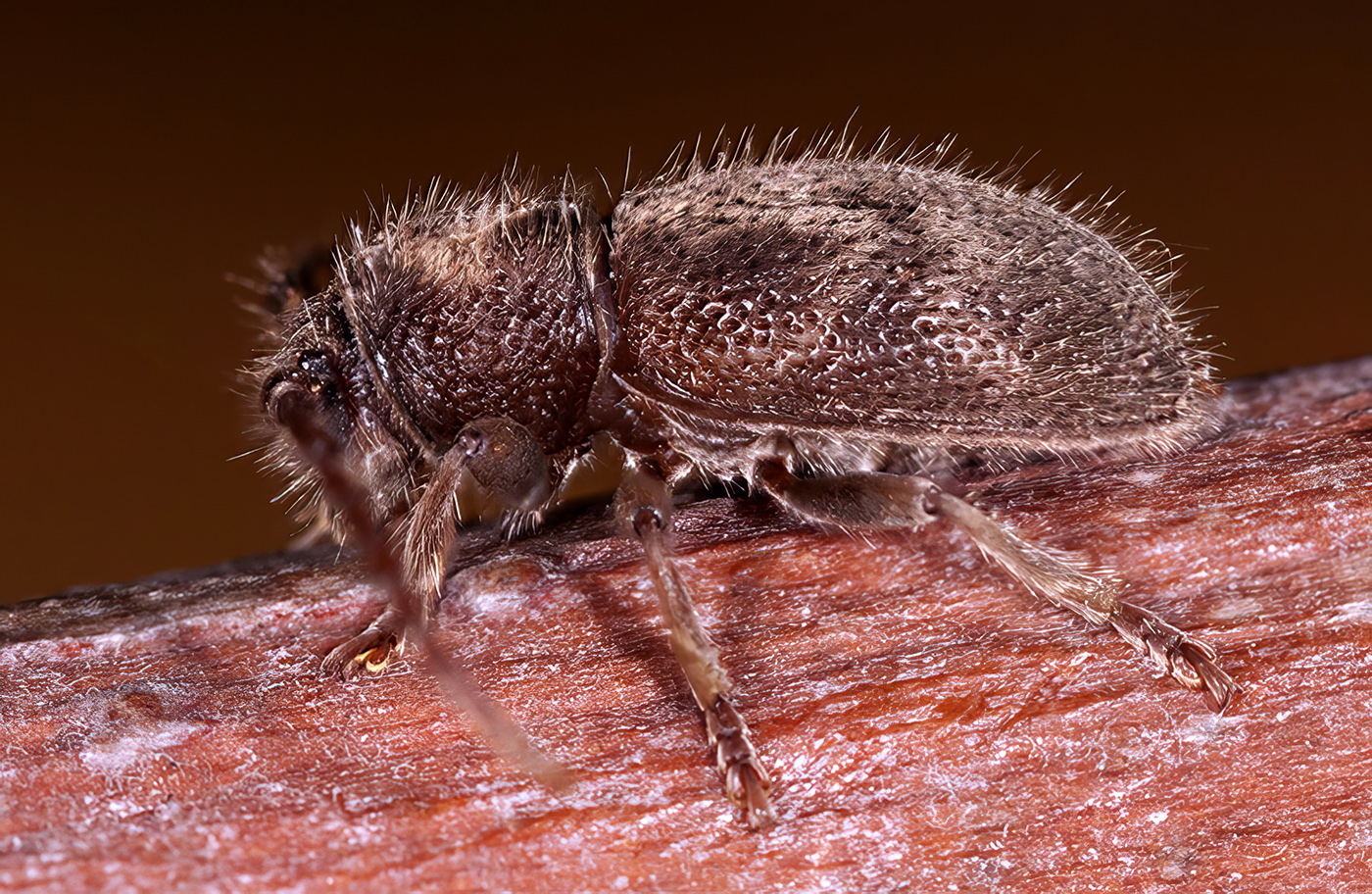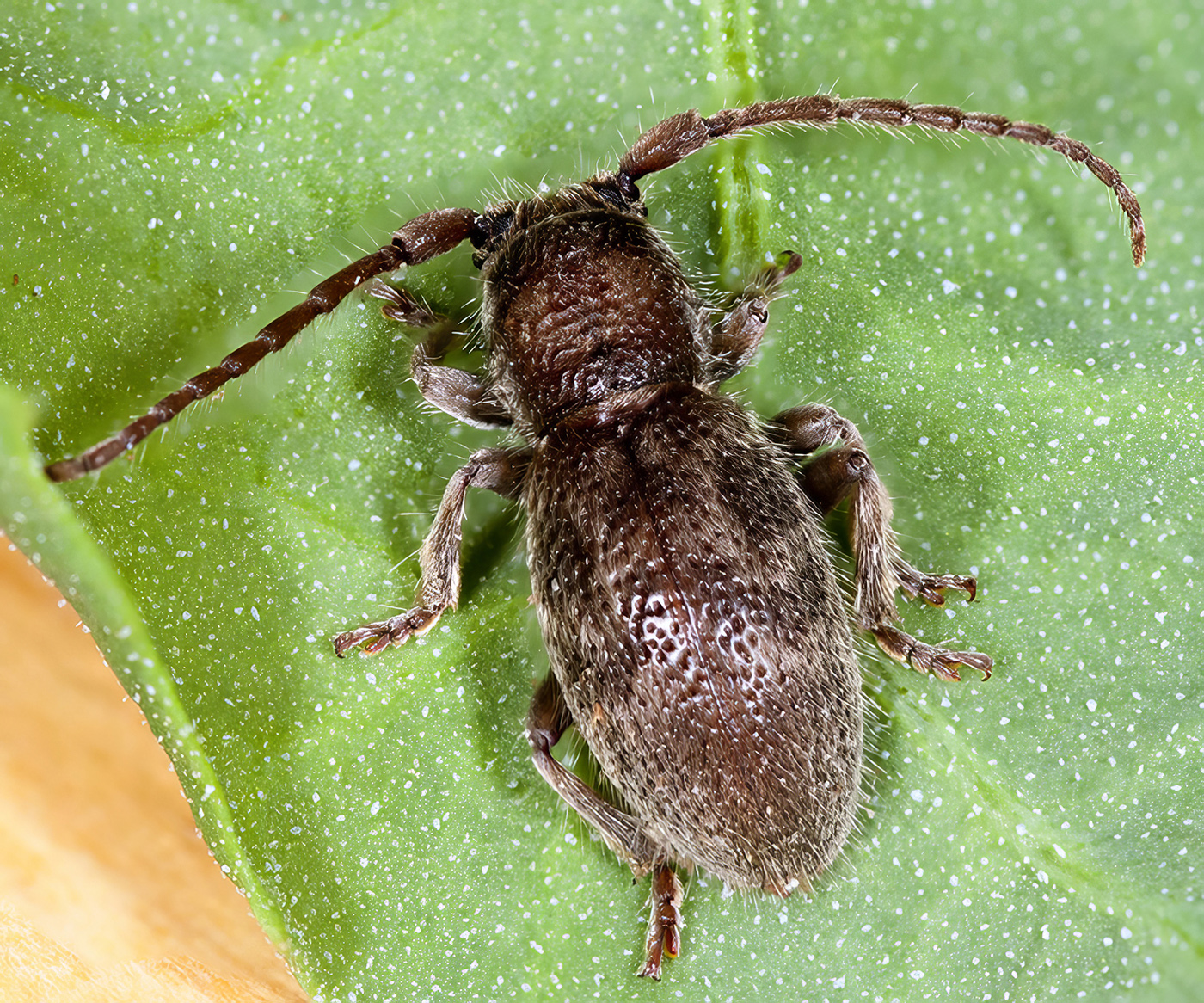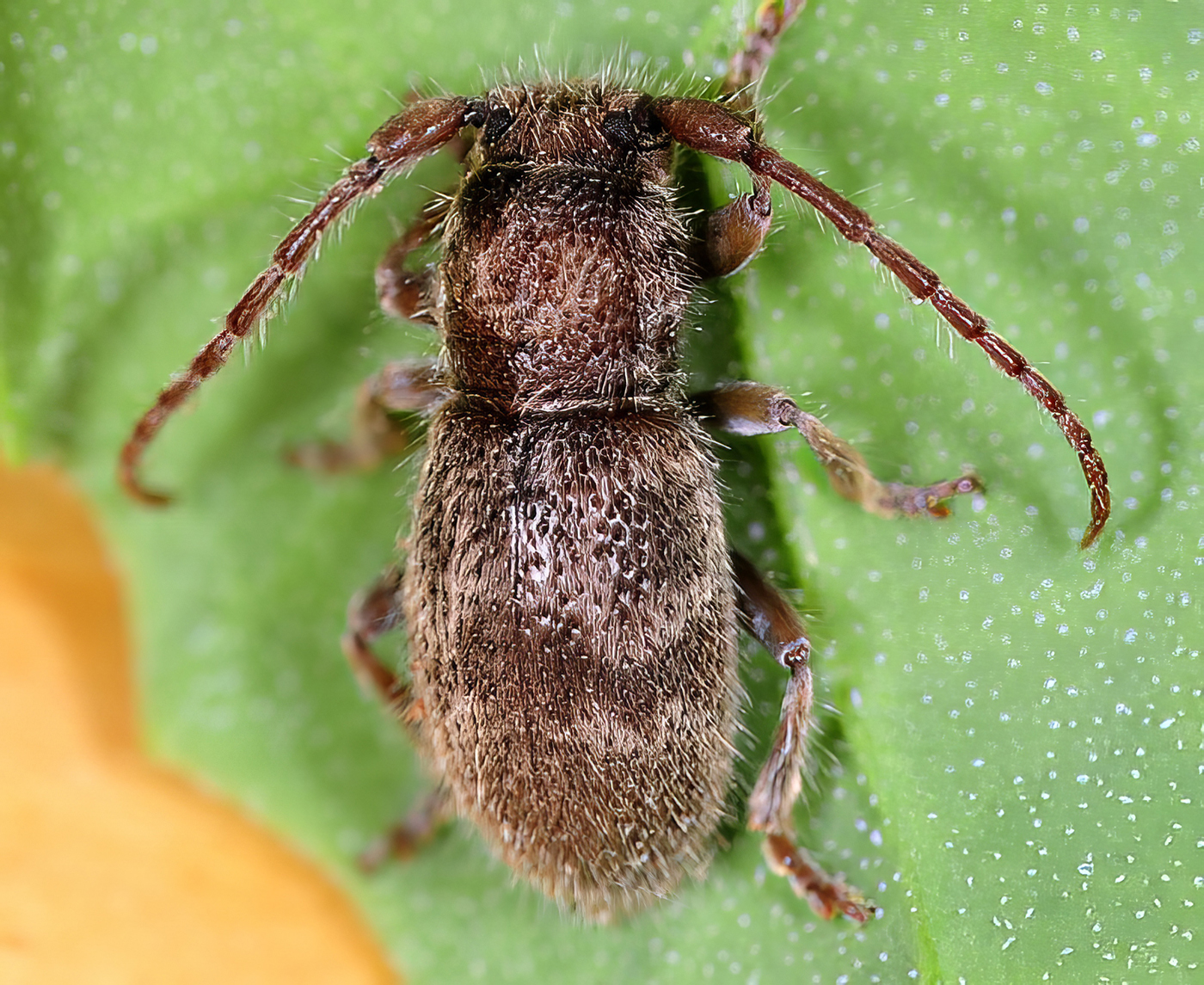[= Parmena solieri lanzai Sama, 1985]
Subfamilia: LAMIINAE / Tribus: PARMENINI

[Photo © David Navrátil & 8K postprocessing Michal Hoskovec]
Mediterranean species of the genus Parmena (and especially the "spurge" group such as P. pubescens, P. solieri...) belong to taxonomically problematic taxa. Over the last decades, many species and subspecies have been gradually described, many have been withdrawn, or synonymized, but since the works of Gianfranco Sama in the 1980s, the genus has not been well processed, although the situation necessarily requires a comprehensive revision. Many collectors do not take into account the isolation and thus the gradually emerging differences of many (especially island - Sicily, Corsica, Crete, Cyprus, Sardinia) populations of Parmena. And even on the continent, many populations have been isolated for decades due to the fragmentation of the original uninterrupted habitats by civilization pressure and the flightlessness of apterous beetles. The result is a really interesting spectrum of individuals which is often very difficult to classify in the frame existing and well known taxa, in general we are in a situation where we observe speciation and look "on its edge"... A typical case is Parmena solieri, in which several subspecies have been described over the years - e.g. Parmena solieri lanzai Sama, 1985 [❖]. This subspecies was synonymized with the nominate subspecies (females A) in the work of Filippo Ceccolini and Fabio Terzani in 2017 [✧]. Nevertheless, differences in the habit of individuals from different localities remain interesting (female B, previously determined as P. solieri lanzai).
In general, however, the whole genus is waiting for a "brave knight in white armor", with a microscope, a DNA-sequencer and endless patience, to unravel one of the many Gordian knots of α-taxonomy of the West Palaearctic longhorn beetles. And keep in mind the fact that the evolutionary process in insects is very fast and the Linnaean approach of immutable species can be counterproductive and completely unnecessary. It is not possible to place everything in clearly described black boxes with individual sharply defined taxa - often the label "cluster XY" is more concise and better describing the reality...
Taxon was included into a newly estabilihed subgenus Pilosoparmena by Maxim A. Lazarev in 2024 [✮].
Body length: 5 - 12 mm Life cycle: 1 - 2 years Adults in: adults hatch in March and as in other Parmena live for many months Host plant: polyphagous in herbaceous plants (Euphorbia - strongly preferred, Ferula, Chrysanthemum, Centranthus, Foeniculum, Malva etc.) Distribution: France, Spain, Italy
The mounted specimens were collected in: (A) Collioure environs (Pyrénées-Orientales, SW France) on August 8, 2015; ex larva Euphorbia characias, Plan-d'Aups-Sainte-Baume envoirons (Var department, Provence-Alpes-Côte d'Azur, S France) on May 8, 2006; (B) Innamorata environs (Elba island, Livorno province, Italy) on June 18, 1996. The mounted beetles were collected in South Sardinia (Italy). The living one was reared from Euphorbia characias stalk found in Port Vendres environs (Pyrénées-Orientales, SW France).Collected by Pascal Renaudie, Petr Kabátek, Giulio Bertagni and Petr Jelínek
[❖]
Sama G.:
Studi sul genere Parmena Latreille, 1829 (Cerambycidae, Cerambycidae) (Seconda parte).
Rivista piemontese di Storia naturale 6: 69-84, 1985 [download]
[✧]
Ceccolini F. and Terzani F.:
Parmena solieri lanzai Sama, 1985, new synonym of Parmena solieri Mulsant, 1839 (Coleoptera: Cerambycidae).
Fragmenta Entomologica, Roma 49 (1) : 25-31, 2017 [download]
[✮]
Lazarev M.:
Taxonomic notes on longhorned beetles with the descriptions of several new taxa (Coleoptera, Cerambycidae). Part II.
Humanity space International almanac 13 (8): 712-718, 2024. [download]



[Photo © Petr Jelínek & 4K postprocessing Michal Hoskovec]
| Subfamilia | Lamiinae Latreille, 1825 |
| Tribus | Parmenini Mulsant, 1839 |
| Genus | Parmena Dejean, 1821 |
| Subgenus | Pilosoparmena Lazarev, 2024 |
| Species | Parmena (Pilosoparmena) solieri Mulsant, 1839 |
